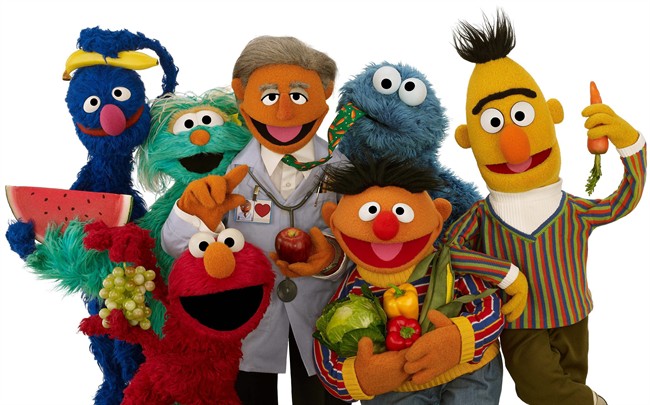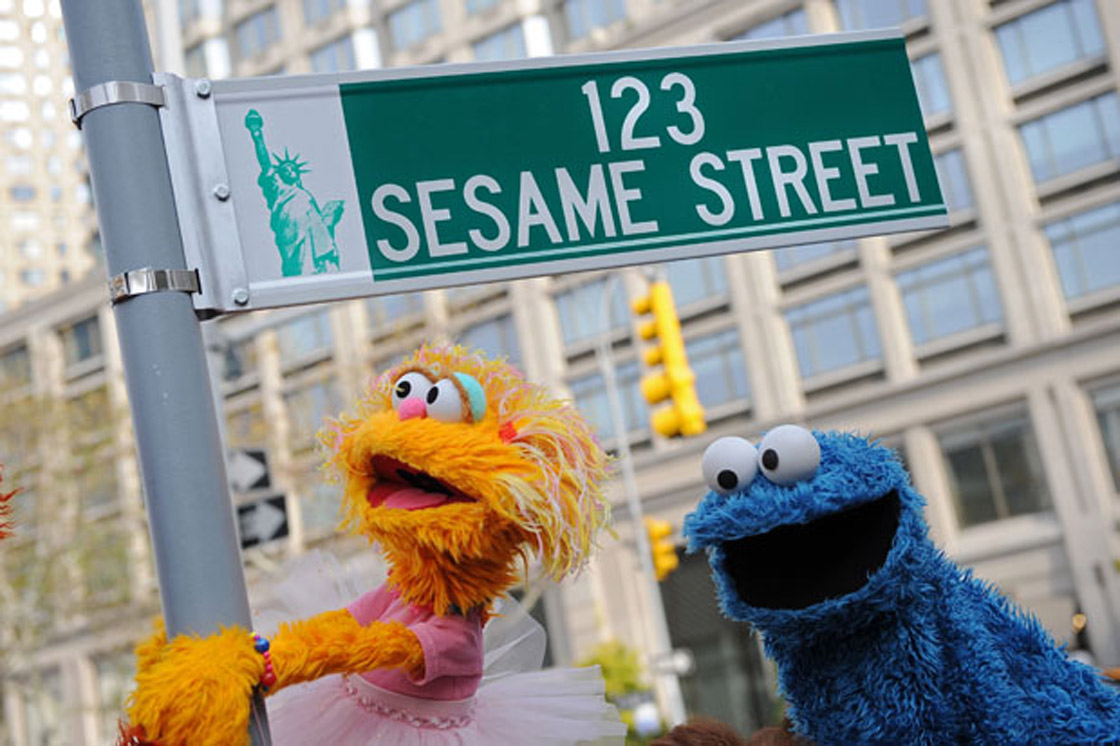Elmo, Big Bird, Cookie Monster and their friends on Sesame Street aren’t just entertainment for preschoolers – a new study suggests the popular television show helps kids prepare for the classroom, with benefits that follow them right into grade school.

Kids who watched the hour-long educational program tended to do better in school than their peers who didn’t. It was especially beneficial for boys and children from low-income families, according to American researchers.
“It is remarkable that a single intervention consisting of watching a television show for an hour a day in preschool can have such a substantial effect helping kids advance through school,” co-author Dr. Phillip B. Levine, a Wellesley College economist, said in a statement.
“Our analysis suggests that Sesame Street may be the biggest and most affordable early childhood intervention out there, at a cost of just a few dollars per child per year, with benefits that can last several years,” he explained.
Levine and his fellow researcher, University of Maryland economist Dr. Melissa Kearney, embarked on what U.S. reports suggest is the “most authoritative” study ever done on the decades-old show.
READ MORE: Sesame Street, heart doctor launch project to boost kids’ health
Sesame Street started in the late 1960s, just as early childhood education and intervention gained traction, the duo says. It’s one of America’s longest-running TV shows and the first aimed at educating toddlers. By 1971, reports say that 40 per cent of preschool-aged kids were watching the show.
For their study, they looked at how kids who grew up watching the program fared compared to their counterparts who couldn’t.
At that time, TV was broadcast through VHF – very high frequency – and UHF – ultra-high frequency – channels. UHF signals were weak though, so that meant some kids growing up in areas with poor reception had limited access to the show.
The researchers identified which cities had access to the show according to the cable signal doled out in their communities. Using census data, they tracked these kids throughout their academic careers.
READ MORE: Cartoon characters key to influencing kids to eat healthier, studies show
Turns out, kids who had Sesame Street as a resource were better prepared for school with the help of the the show’s characters teaching them about the alphabet, basic math and concepts, such as sharing and teamwork.
“Children who were preschool age in 1969 and who lived in areas with greater Sesame Street coverage were significantly more likely to be at the grade level appropriate for their age through school. The effect on grade-for-age status is particularly pronounced among boys, and black, non-Hispanic children,” the authors wrote in their study.

Get weekly health news
If boys lived in neighbourhoods that had readily available access to Sesame Street, they had a 16 per cent reduced risk of being left behind in the classroom, for example.
Their findings build on previous research that looked at test scores comparing kids who grew up watching Sesame Street next to their peers who didn’t.
The scientists say their findings are “encouraging.” They say the TV show can be shared with the masses easily and it’s inexpensive (they suggest it costs about $5 per child per year in today’s U.S. dollars).
“These findings raise the exciting possibility that TV and electronic media more generally can be leveraged to address income and racial gaps in children’s school readiness,” they wrote.
Keep in mind, the program touches on real-life situations, such as homelessness and even incarceration.
READ MORE: New Muppet with parent in jail gets mixed reviews
Sesame Workshop, the non-profit organization behind the TV show, even points to Cookie Monster as its tool for teaching kids about self-control.
A University of Iowa study suggested that the perpetually hungry monster helped kids volunteering in a study wait longer to dig into chocolate chip cookies.
“Me want it,” Cookie Monster says in a video. “But me wait.”
The kids who watched Cookie Monster before being presented with snacks waited four minutes longer than their peers. They also controlled their impulses to shout out character names.
“These are the non-academic skills that help make a child successful at school. They help children manage their behaviour, sit still and pay attention,” the researcher, Dr. Deborah Linebarger, said.
Sesame Street’s influence on kids is wide and varied: in 2013, Sesame Workshop partnered with the produce industry so that it could use Elmo, Big Bird and the other furry characters free of charge to market fruits and veggies to kids.
READ MORE: Sesame Street characters to be used to help encourage kids to eat fruit, veggies
The characters are helping to market fresh fare to kids using stand-alone signs, stickers and labels. Plenty of American research has already shown that it works: hand kids an apple emblazoned with an Elmo sticker and he’ll choose it over cookies and French fries, one study suggested.
The researchers in that case said that parents and health officials should “exploit” the popular cartoon characters the same way fast food companies manipulate kids with flashy packaging and free toys.
A three-year experiment in South America has a handful of the Muppets adopting healthy eating and exercise habits to see if it’ll rub off on children. The Latin branch of the Sesame Workshop has Bert and Ernie jumping rope and snacking on carrots, while Cookie Monster reminds himself that cookies are a weekly treat instead of daily indulgence.
Finally, University of Rochester scientists are even turning to Sesame Street to study brain development in kids to identify those who may be battling learning disabilities.
READ MORE: Scientists use Sesame Street to study brain development in children
Using brain imaging, the researchers are showing kids Sesame Street segments to understand how the youngsters are processing information in real time.
Watch a clip shown to the kids in the study here:
Levine and Kearney’s full findings were published Monday night in the National Bureau of Economic Research. Read the full study here.
– With files from the Associated Press
carmen.chai@globalnews.ca
Follow @Carmen_Chai









Comments